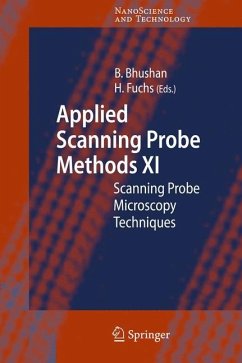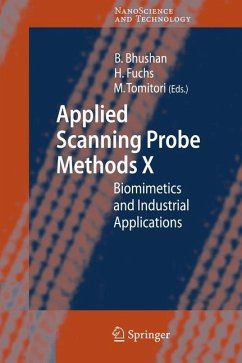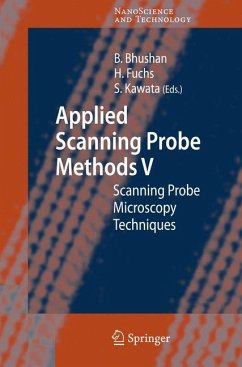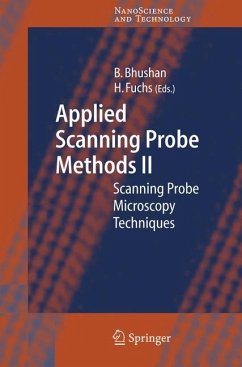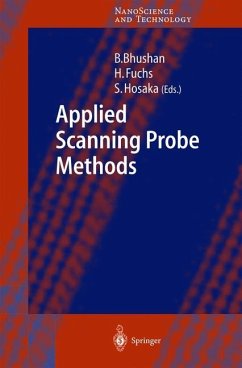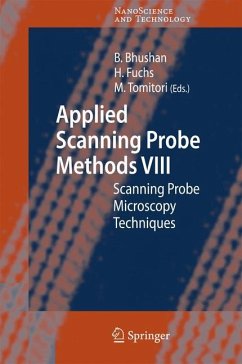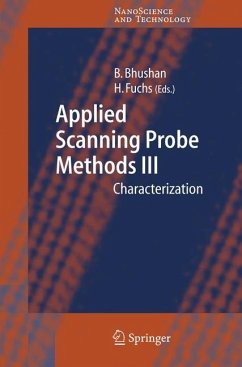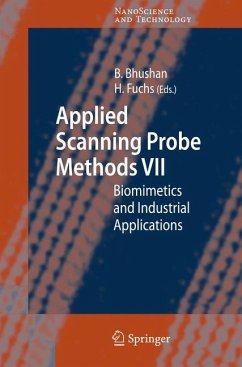
Applied Scanning Probe Methods XII
Characterization
Herausgegeben: Bhushan, Bharat; Fuchs, Harald

PAYBACK Punkte
57 °P sammeln!
This volume examines the physical and technical foundation for progress in applied scanning probe techniques. It first introduces scanning probe microscopy, including sensor technology and tip characterization, and then details various industrial applications.
Crack initiation and growth are key issues when it comes to the mechanical reliab- ity of microelectronic devices and microelectromechanical systems (MEMS). Es- cially in organic electronics where exible substrates will play a major role these issues will become of utmost importance. It is therefore necessary to develop me- ods which in situ allow the experimental investigation of surface deformation and fracture processes in thin layers at a micro and nanometer scale. While scanning electron microscopy (SEM) might be used it is also associated with some major experimental drawbacks. First of all if polymers are investigated they usually have to be coated with a metal layer due to their commonly non-conductive nature. Additi- ally they might be damaged by the electron beam of the microscope or the vacuum might cause outgasing of solvents or evaporation of water and thus change material properties. Furthermore, for all kinds of materials a considerable amount of expe- mental effort is necessary to build a tensile testing machine that ts into the chamber. Therefore, a very promising alternative to SEM is based on the use of an atomic force microscope (AFM) to observe in situ surface deformation processes during straining of a specimen. First steps towards this goal were shown in the 1990s in [1-4] but none of these approaches truly was a microtensile test with sample thicknesses in the range of micrometers. To the authors' knowledge, this was shown for the rst time by Hild et al. in [5]. 16.



